Ghosts, skeletons, and zombies! It’s Halloween, and our neighborhood is overrun by scary creatures playing trick-or-treat.
But look carefully. The most terrifying monsters in our neighborhood are the ones strangling our trees! Invasive vines are real-life ‘serial killers’ — stealing food, water, and light from trees, and leaving ghosts, skeletons, and zombies behind.
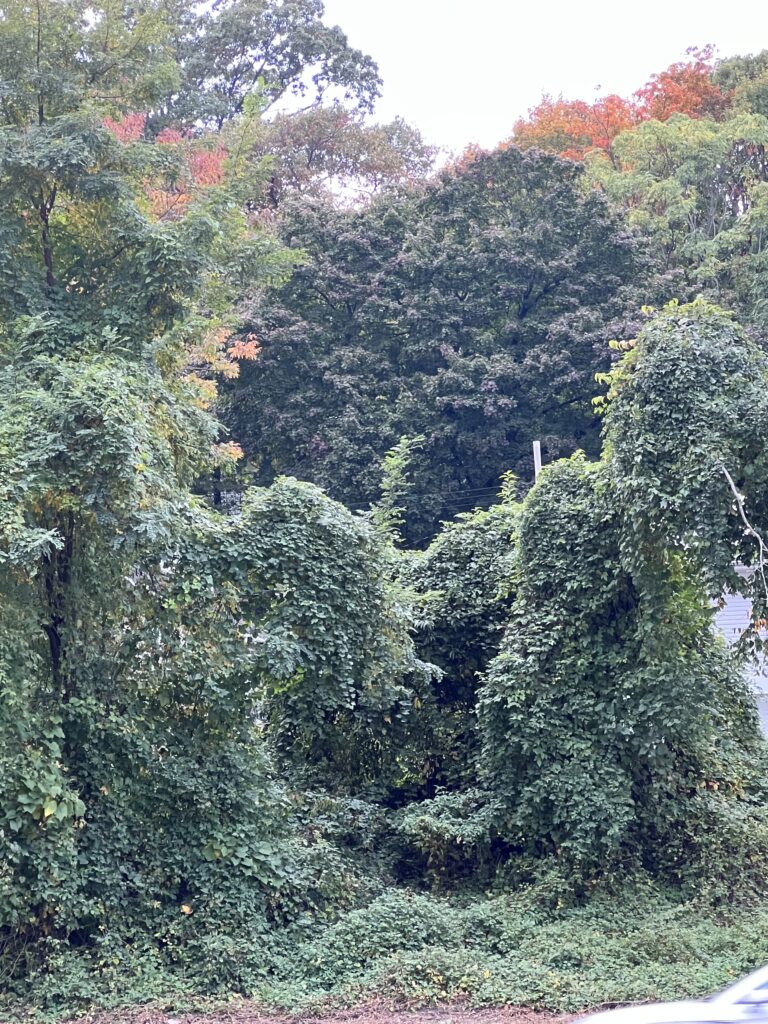
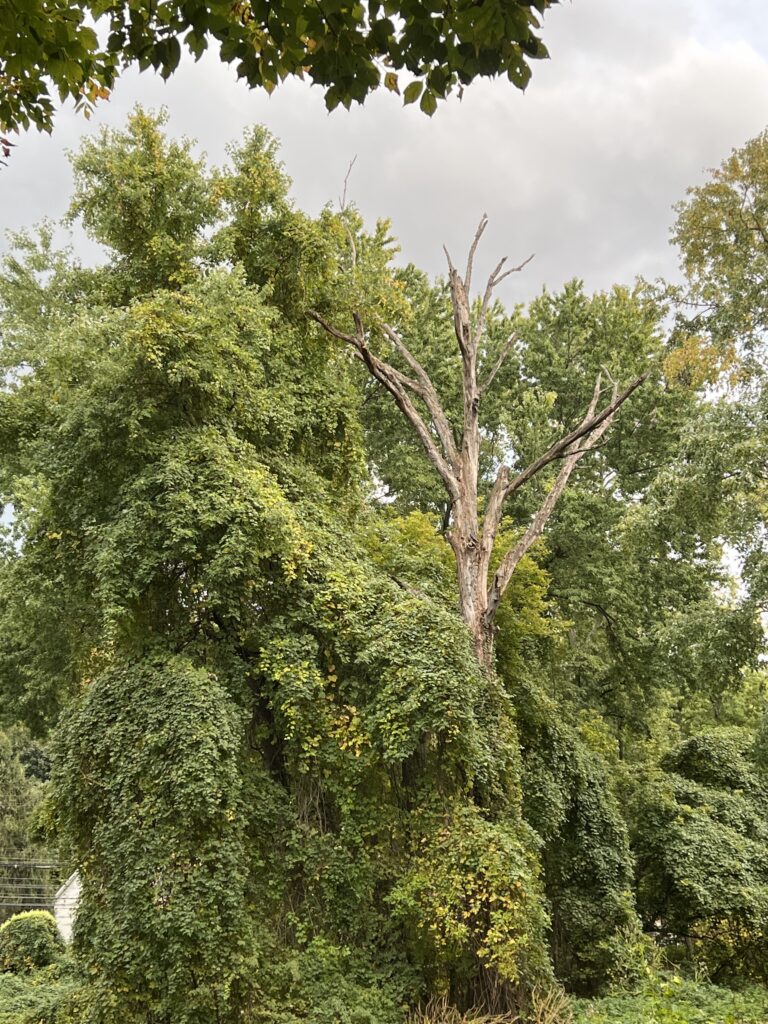
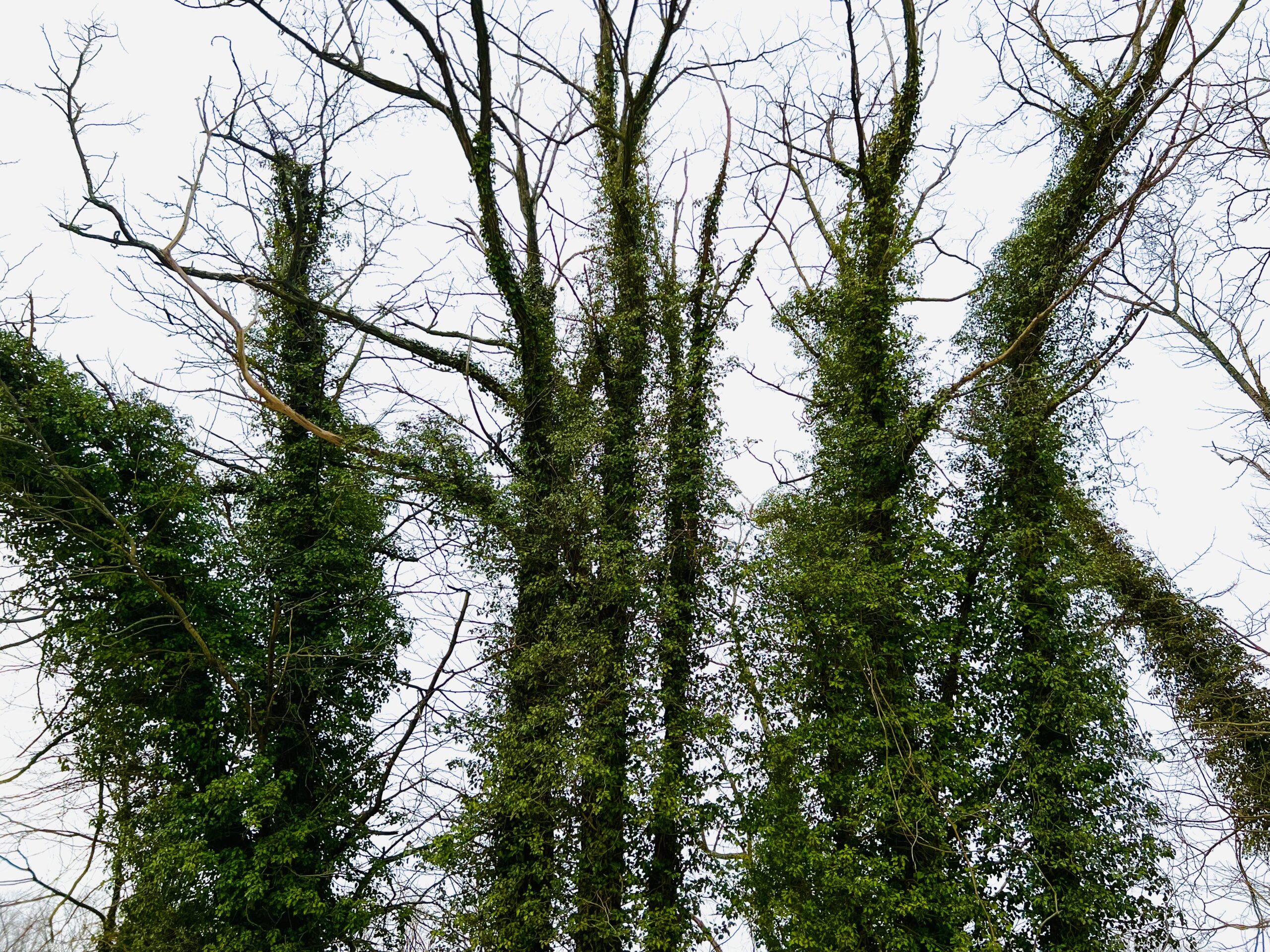
You’ve seen these vines doing their evil deeds. Our roadsides are infested with them. Our woods are being devoured by them. They cause trees to fall onto roads and buildings, costing taxpayers, utilities, highway departments, parks, and private property owners billions of dollars in property damage, clean-up, and removal. Even worse, in forests, meadows, and wetlands, these vines are replacing the native plants essential to maintaining biodiversity –the insects, birds, and animals in our ecosystem.
Three of the most destructive vines in our region are Oriental Bittersweet, Porcelain Berry, and the ever-popular English Ivy.

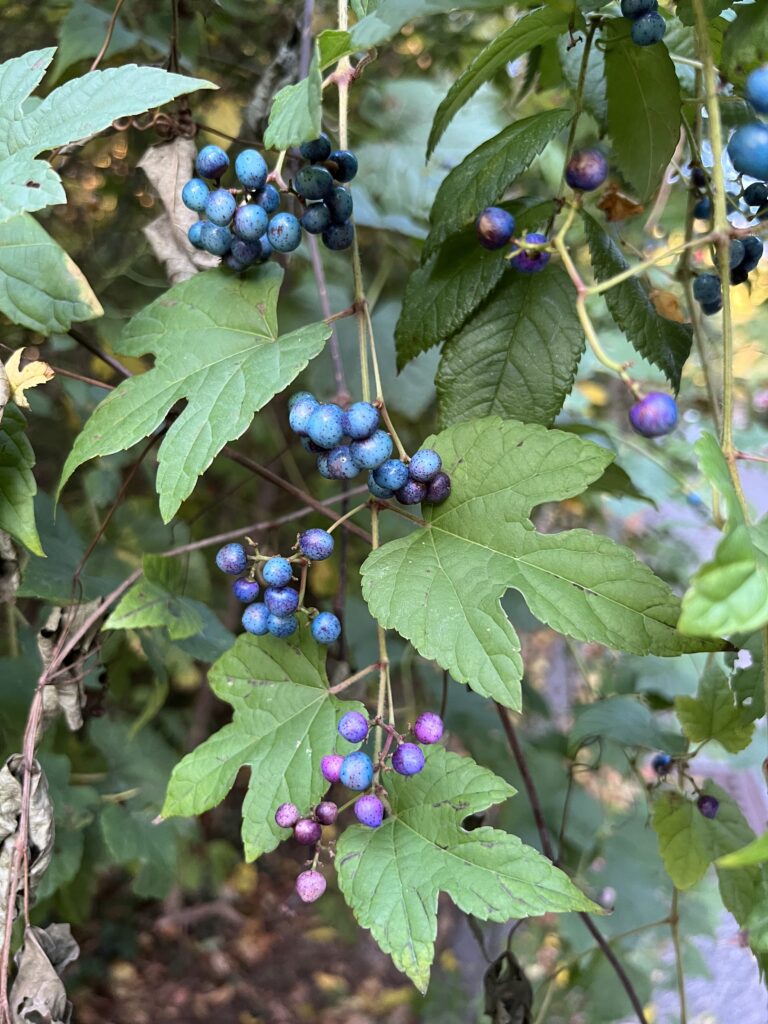
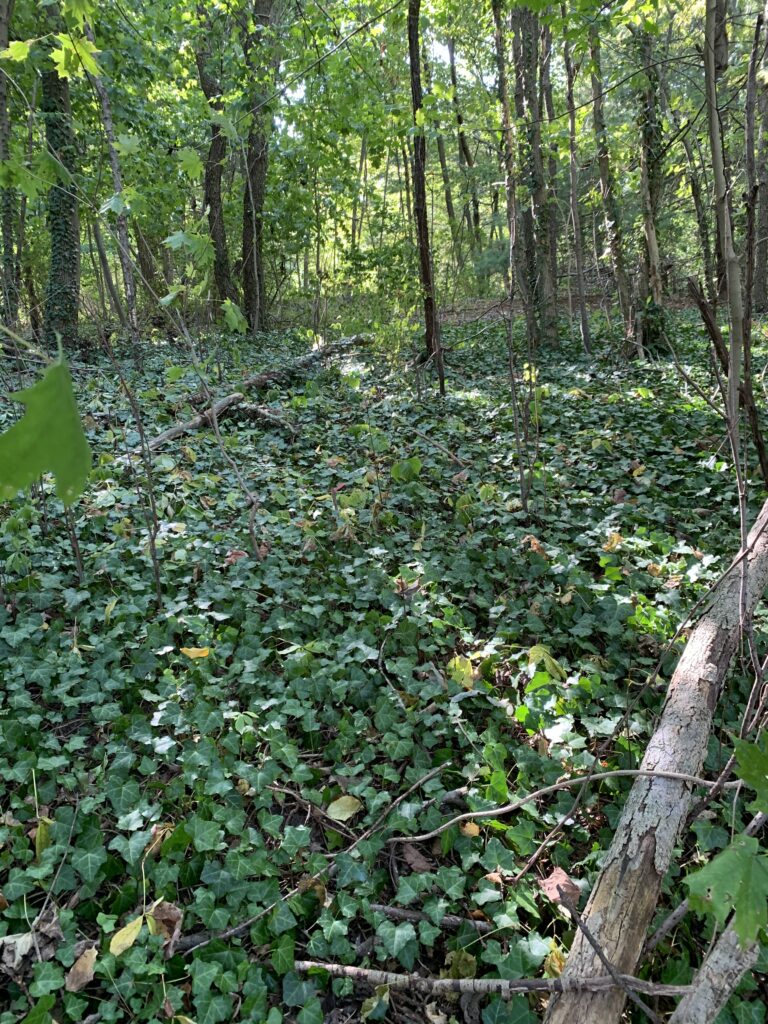
All of these vines belong on other continents. They are invasive here because they have no natural controls in North America and, therefore, are able to aggressively out-compete our native plants.
So, how did they get here?
Gardeners! All of these killer vines were imported and planted here intentionally because gardeners found them attractive. European colonists introduced English Ivy as early as 1727. Oriental Bittersweet was introduced as a garden plant in the 1860’s, and Porcelain Berry was brought to the US from East Asia as an ornamental ground cover in the 1870’s. These plants had no commercial use or food value for humans or animals — they were planted solely for decoration. To be fair, gardeners back then had no idea what horror they were unleashing on the Eastern US. But we can learn from their mistakes.
Oriental Bittersweet is invasive from Maine to North Carolina and west to Wisconsin and Missouri. It is fast-growing and easily overwhelms native vegetation, both on the ground and in the tree canopy. Its enormous vines, up to 4 inches in diameter, can strangle, and even uproot, mature trees and shrubs.
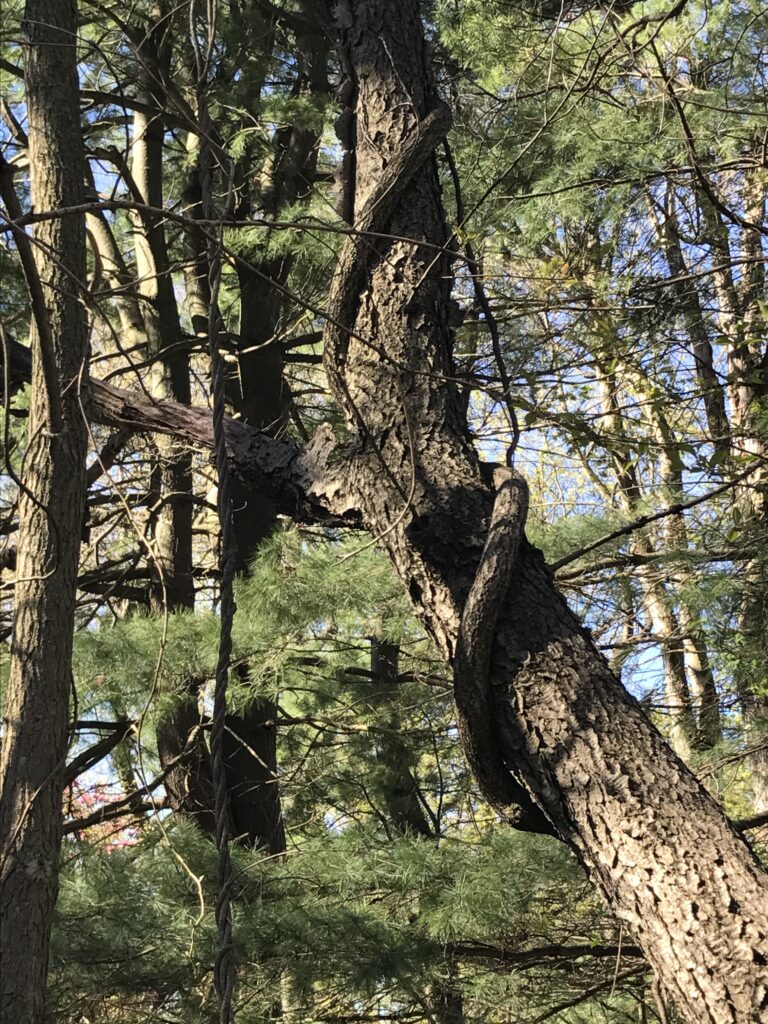
Porcelain Berry is invasive from New England to Virginia and west to Wisconsin and Iowa. It is extremely aggressive on roadsides and other disturbed areas, as well as along forest edges. It runs along power lines, and often brings them down in storms. Porcelain Berry kills by completely enclosing shrubs and trees, stealing all available light, until the smothered plant dies.
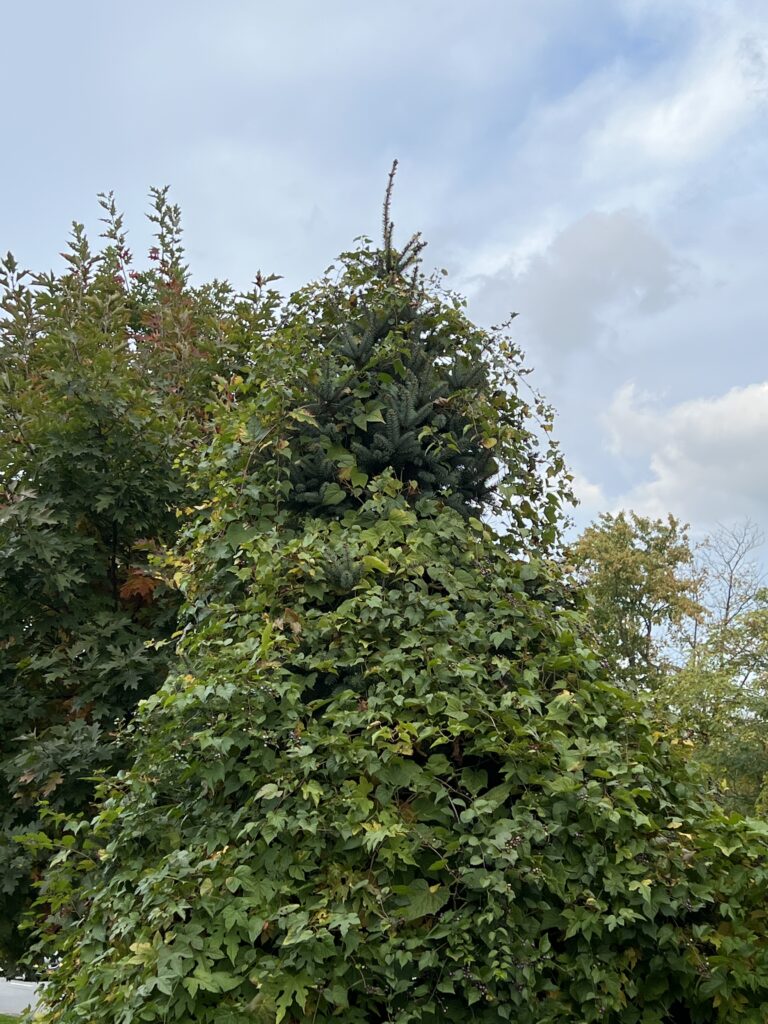
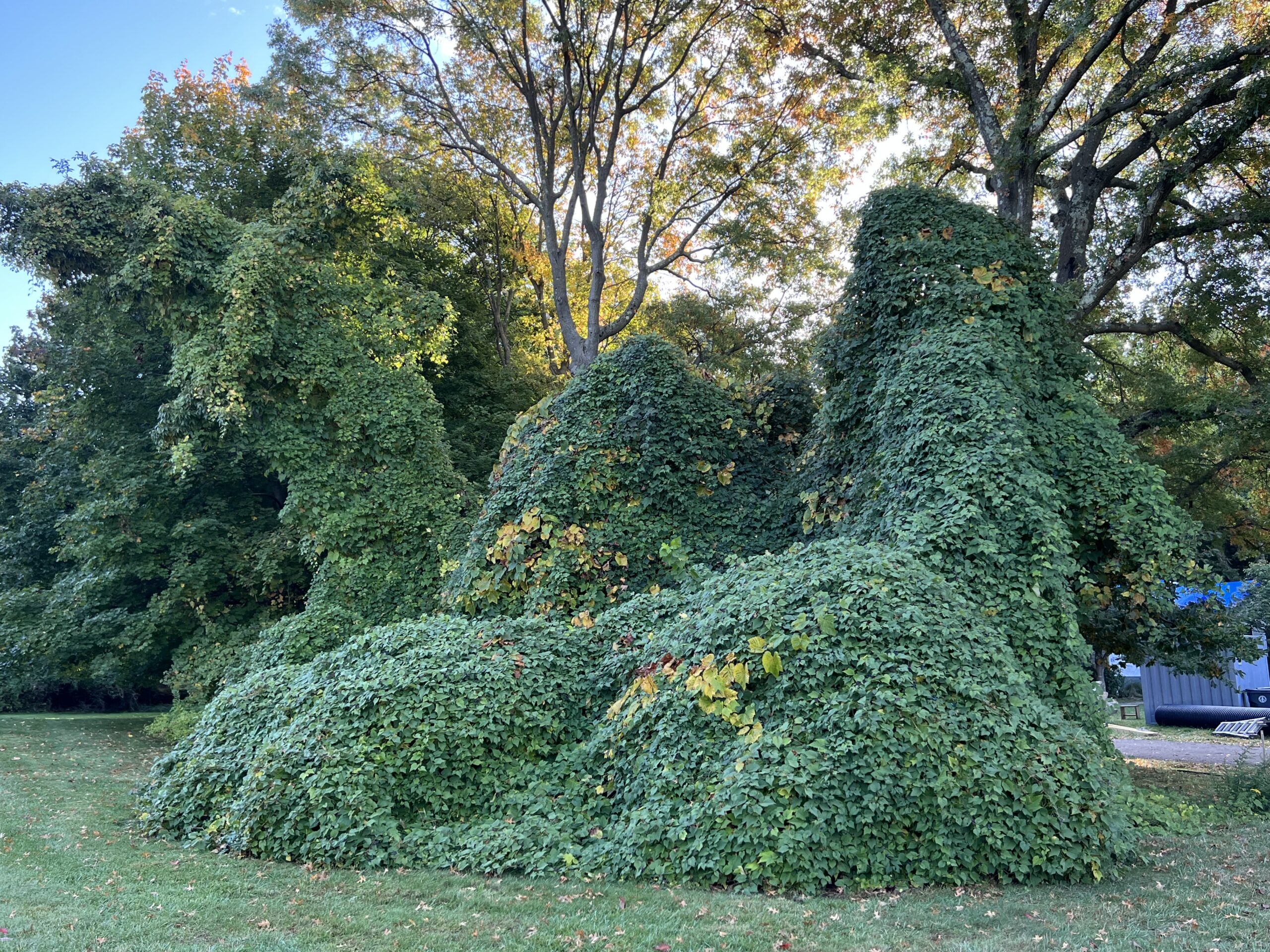
Ivy is a serious problem for us at the Nature Center, and we have warned about its dangers in earlier posts. See Evil Ivy Over Everything here. Where Ivy has escaped gardens in the US, it has destroyed vast areas of woodlands, reducing vibrant and diverse local ecologies to monocultures with no value at all for birds, insects, or forest animals. In suburban landscapes, Ivy causes enormous damage to trees, fences, and wood siding.
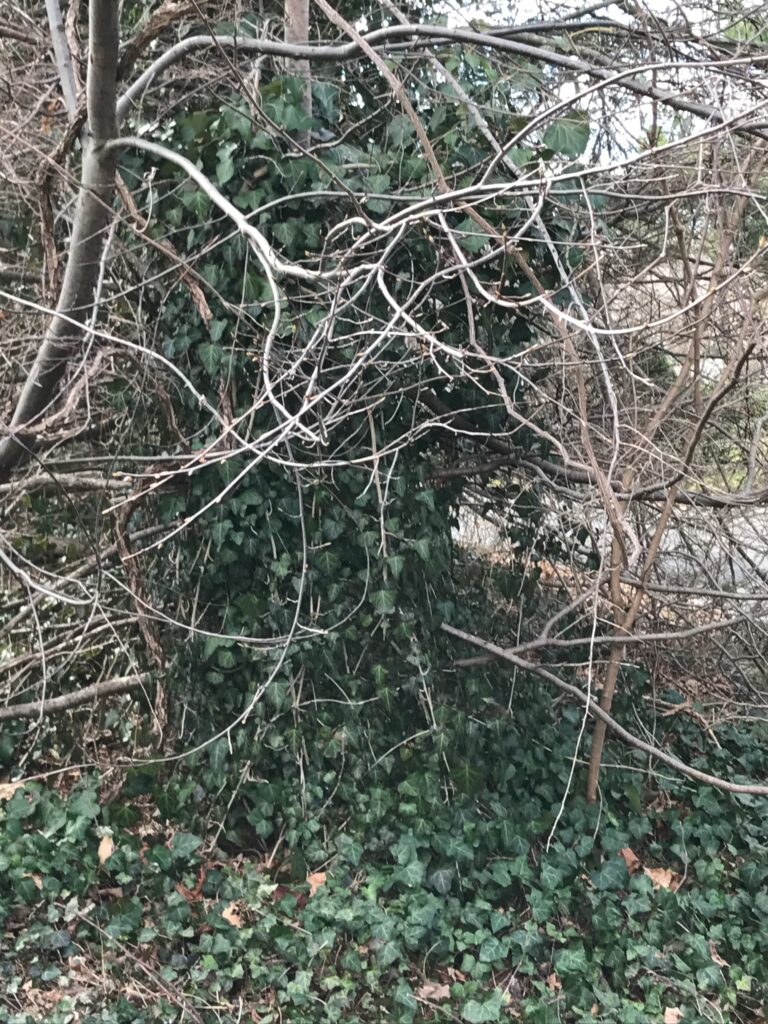
So, what have we learned from these gardening mistakes? According to the National Park Service, of the 1200 invasive plant species currently documented in natural areas, almost two-thirds were intentionally imported and planted as ornamental plants. Until recently, all three of these killer vines were still being sold and planted in gardens. In 2015, Oriental Bittersweet and Porcelain Berry finally were recognized as threats to the environment, and legally prohibited for sale and distribution in New York and a number of other states. English Ivy, however, has somehow been given a pass, and is still legally sold in every state except Oregon. Unfortunately, hundreds of other ornamental plant species, already known to be invasive, are still being sold and planted by gardeners all over the US. Legal regulation of invasive plants lags way behind the science.
So, what can we do to help? First, remove and destroy these three killer vines wherever you can, and be sure that the vines and berries go into the trash – not into brush piles or compost where they can easily spread further.
Next, before buying or planting any ornamental plant, do a quick investigation. It’s easy! Enter the name of the plant you’re considering into Google, or another search engine, along with the word “native” to quickly find out where the species originated. Plants native to your region are safe and beneficial to the ecology.
If the plant you are considering is not native to your region, do the search again, adding the word “invasive” along with the plant name. Websites devoted to preventing the spread of invasive plants will come up in your search and warn you if a plant is a known threat to our environment. Here is a sample search for the common landscape plant, Burning Bush.
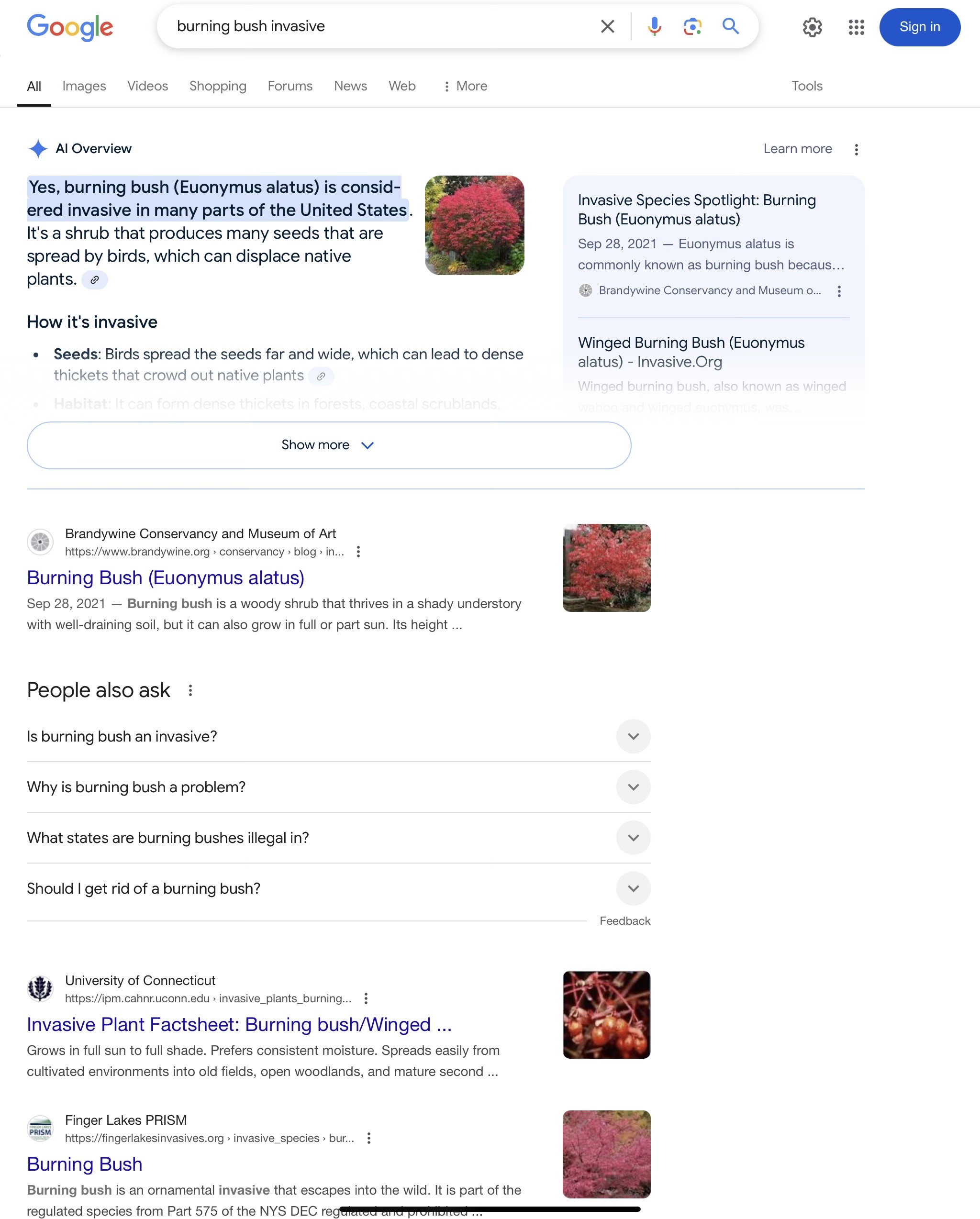
Collectively, home gardeners have a huge impact on the environment. The most obvious example of their power – for good and for ill – is the horror of almost 1000 invasive ornamental species damaging our ecosystem. Our gardening forebearers made some terrible mistakes and unleashed these scary monsters on us. We can do better.

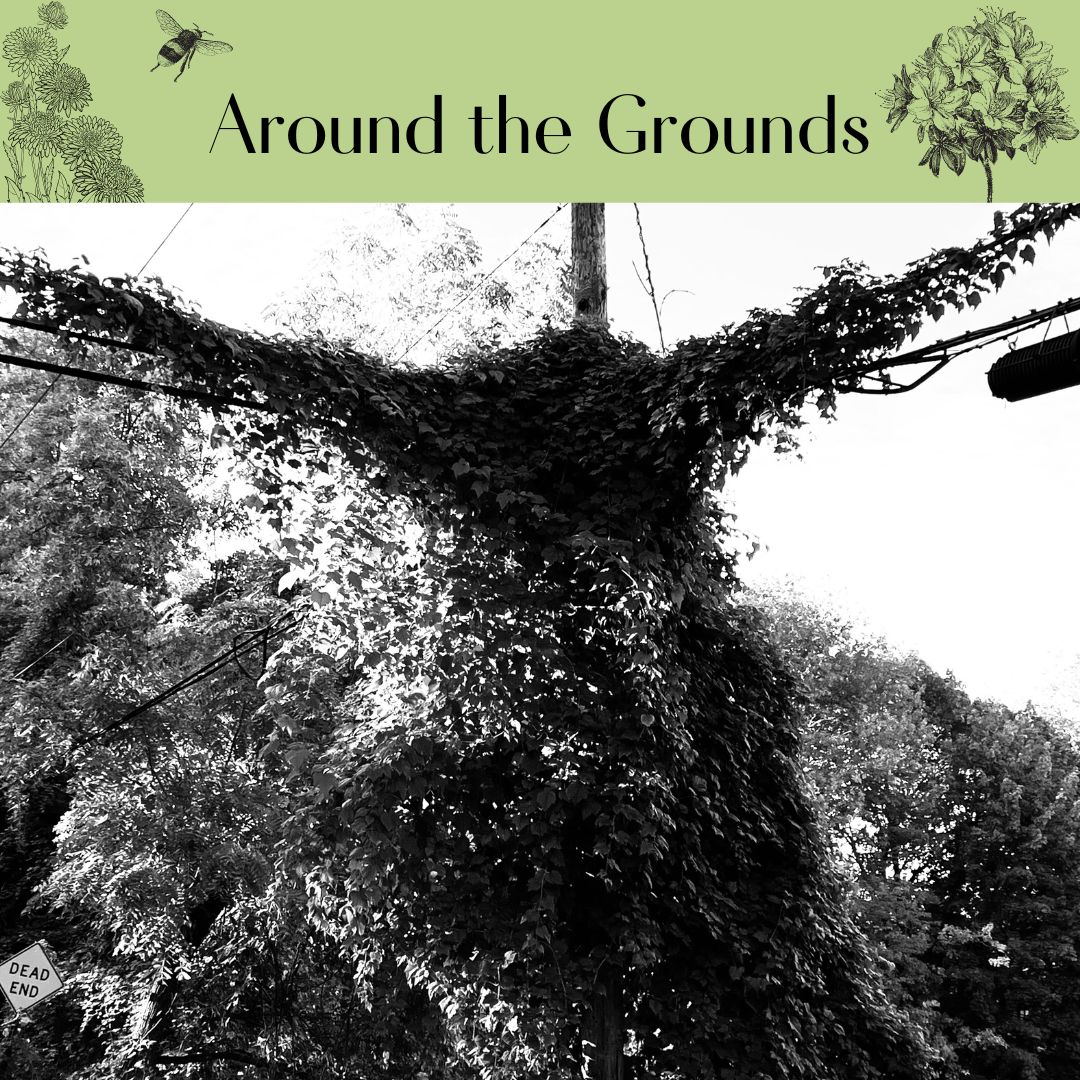
Hi Cathy,
Excellent blog post, especially for Halloween. Great photos showing the all too prevalent but scary impact of these killers. Sadly, we toured Kykuit today and we saw a number of non natives that the R family had brought over generations ago to decorate their home (e.g., wisteria).
Thanks,
Jim
Most of the really harmful invasive plants were introduced to our wild areas accidentally because home gardeners planted them. Such an avoidable disaster! And it’s still happening: I’m seeing non-native ornamental grasses popping up everywhere in disturbed areas, so it pains me to see nurseries selling them and people planting them. Plant native!
I’ve been fighting with English Ivy since buying my house, pulling it out when it pops up. I had it removed along my stone wall, but it cannot be removed from 2 huge trees without destroying them. In autumn, the birds do seem to enjoy the berries produced by the small amount of ivy left behind.
Unfortunately, the birds spread ivy to new areas when they eat the berries. I’ve seen ivy pop up in new places spread by seed.?
This is indeed scary! Seeing the skeleton tree or that completely covered pine in your photos really makes the point. So sad.
And to think I used to admire the pretty berries on porcelain berry and bittersweet! So much harm done by pretty garden plants that just don’t belong here!
Dear Cathy, This would make a great program for kids who all love Halloween. As a child I was an avid spotter and destroyer of non native species of buckeye because it killed bees which we raised. We need children to join the mission of promoting native plants.
True! There are so many beautiful native plants it’s really unnecessary to plant non-natives in our gardens.
Kathy,
You are brilliant, interesting, funny and timely with this article! Thank you.
As for Virginia creeper, I keep it around because it does have wildlife value, but I do control it a bit. Right now I see those lovely red leaves crawling rather high in my yard, so I need to cut them back. But i don’t yank them; am happy to have them for ground cover under taller shrubs. and such.
Thank you, Lynne. I love the color of Virginia Creeper this time of year!
Good question! We always leave it. First, it’s really pretty in the fall. Second, the birds love its berries. Finally, we have not seen it damage trees. It does not have the tree-strangling habit, and does not seem to get heavy enough to break branches — at least of the native hardwoods. It can cover more ground than you might like, but we don’t see it take over the way the other 3 vines do. I’m interested to know if others have a different experience with it…?
Some people are also weary of Virginia creeper (native) vine climbing up trees and shrubs. I wonder if it has any detrimental effects on the trees and shrubs.